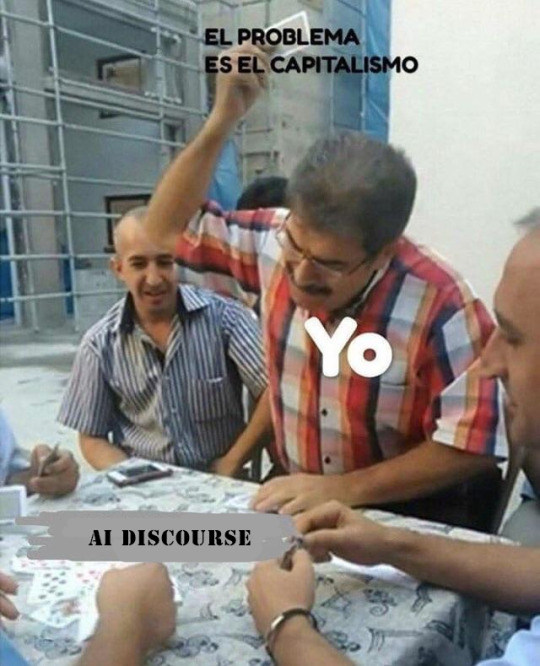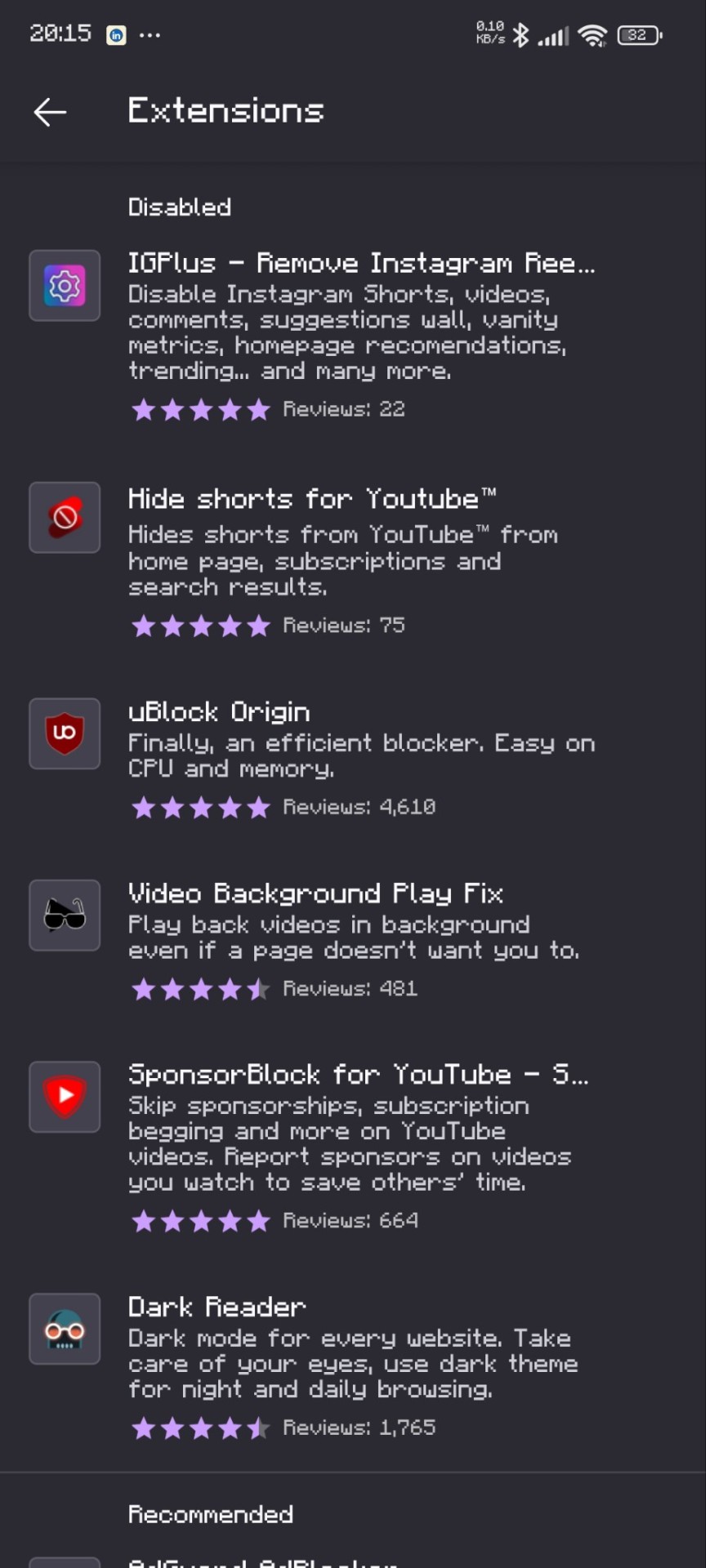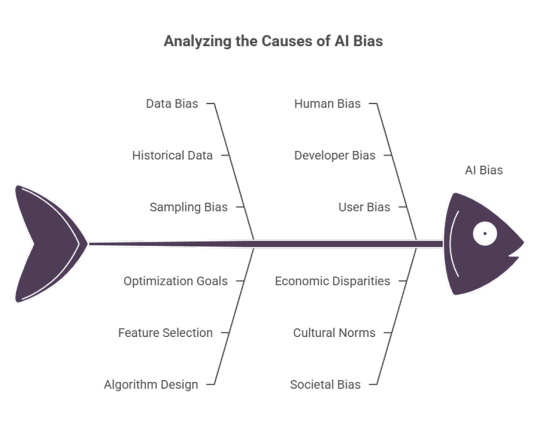#Testing Big Data applications
Explore tagged Tumblr posts
Text
Not to preach to the choir but I wonder if people generally realize that AI models like ChatGPT aren't, like, sifting through documented information when you ask it particular questions. If you ask it a question, it's not sifting through relevant documentation to find your answer, it is using an intensely inefficient method of guesswork that has just gone through so many repeated cycles that it usually, sometimes, can say the right thing when prompted. It is effectively a program that simulates monkeys on a typewriter at a mass scale until it finds sets of words that the user says "yes, that's right" to enough times. I feel like if it was explained in this less flattering way to investors it wouldn't be nearly as funded as it is lmao. It is objectively an extremely impressive technology given what it has managed to accomplish with such a roundabout and brain-dead method of getting there, but it's also a roundabout, brain-dead method of getting there. It is inefficient, pure and simple.
#the notes on this post are about to get sooooo annoying#this doesnt touch on the fact that AI is stealing artist's jobs which i think is the real biggest harm of AI#but like#god#just take a minute and think about how stupid the current use-cases for AI are when you consider how it gets to those conclusions#this guesswork has its place in fields where guesswork is necessary like when screening for potential health issues in the medical field#but the benefit of the medical field is that when you get a false positive you can just do further testing to confirm the initial reading#that's called a second opinion and it is how the medical field is structured fundamentally#if you screen someone for cancer and it comes out positive#but it turns out they didnt really have cancer#that's fine! that's good news and it's good that you were at least wary of it!#but so many other applications for AI do not have this leeway where incorrect answers have further reaching consequences#and more importantly AI isn't stealing the fucking jobs of doctors!!!#although jesus i really wish doctors would stop using AI to take notes for patients#yes please lets give all my personal medical info to a big machine that stores and processes literally everything it hears#im sure there would never be far reaching consequences if that machine ever had a data breach#blah
3K notes
·
View notes
Text
I think that Jayce is a bit of social chameleon actually, like he tends to "match" the vibe of whoever he is hanging out with, and that's part of the reason why every time he's with Vi things go completely haywire (part of the reason, some of it just seems to be like cosmic bad luck or something).
Because Vi is extremely direct and tries to kind of brute force stuff like a lot, and Jayce going along with that equals things like both of them trying to punch/smash shit until it's better. Vi is someone who views every problem as a nail and Jayce is like "well I guess I do have a big hammer" and it goes poorly.
But it's not just Vi! Jayce does this with basically everyone. I mean he disagrees with people, he's not facetious or a doormat or any kind of yesman. He just also kind of goes, oh, I guess we're doing X now? And then does his own thing in the tone/style of X.
Like when he's spending a lot of time around Heimerdinger, he's a lot more cautious, methodical, but also he lets his idealism run more of the show. He's very cognizant of risk, because Heimerdinger centers risk as his chief concern when he talks with Jayce about his research.
Whereas when he's spending most of his time with Viktor, the priority is innovation. Coming up new ways of utilizing and interpreting their research and data. Testing the limits of what it can do and then figuring out how to take it even further. Caution takes a definitive backseat to the countless possible applications of hextech.
Then when he's with Mel, he gets more image-conscious. How's his research going to be perceived? What will the legacy of it be? He focuses more on his role as a councilor and a social figure, less on his priorities as an inventor, because Mel's focus on hextech is its social clout and what it means for the city, and Jayce starts reflecting that (whereas his initial spiel about bringing magic to the masses seemed more of a "people in general" sense rather than a "Piltover specifically and maybe even exclusively" one).
Anyway I guess what I'm getting at is that whoever Jayce is with, he will try and match their freak. Which is why it's probably a good thing that he was on opposite ends of the narrative from Jinx, but also is contributing factor to why he and Viktor together nearly destroyed the world.
886 notes
·
View notes
Text
Fascist, Thus Inefficient
“As you can see, my young apprentice, your friends have failed,” the Emperor said, triumph in his tone. “Now, witness the firepower of this fully armed and operational battle station!”
Luke looked at him in shock.
“Fire at will, Commander!” the Emperor said.
Fourteen months previously…
“Shipment IL-214-73 arriving,” a petty officer reported.
“Thank goodness,” muttered one of the technicians. “After the delays we’ve been having, we need to get those Khyber crystals into the third main focusing array. It’s been on the critical path for a week.”
He brought up the display, frowning. “All right, I think we can make up a bit of time if we just get them straight to cutting and installation.”
“Don’t we need to run them through the testing process first?” a more junior technician asked. “That’s on the list.”
“I know it’s on the list,” the senior tech replied. “But the list was written when they didn’t expect there’d be rebel attacks hitting our supply lines.”
He waved at the screen. “The testing process means heating each individual crystal up to eighteen hundred, even though we know Khyber can all handle temperatures of up to forty-seven-fifty. The cutting process doesn’t rely on heat tolerance either. Any crystalline flaws will come out in cutting, and we can just junk them. It means cutting takes a bit longer, but by going straight to cutting we can save at several hours on the overall process. And you know how much time we’ve lost already.”
The junior tech looked worried, then shook his head.
“All right,” he replied. “I guess so.”
“You need to learn how things are done in practice,” the senior tech said. “No big deal.”
Eleven months previously...
“I’m quite sure Rothana Heavy Engineering’s XJ-15 hypermatter feed systems will meet your needs better than the alternatives,” the Rothana representative said, as Admiral Jerjerrod examined the datasheet.
He wasn’t so sure. The newer units had better specifications, certainly, but they weren’t proven, and they were also somewhat more expensive.
“I don’t think that’s necessarily the case,” he said, out loud. “While I appreciate Rothana’s position, the Sienar alternative has similar flow rates and more proven applications.”
The Rothana representative nodded, sagely.
“I understand entirely,” he said. “However, I must point out that Rothana has some important additional information to present.”
He held out a credit chip, which Jerjerrod took and inspected.
“Owing to the XJ-15’s protracted development, we are willing to provide our test units at cost,” the representative went on. “That is in addition to having a higher production rate than our competitors and a less committed production output.”
Jerjerrod hesitated, then pocketed the credit chip.
“That all seems in order,” he said. “The XJ-15 it is.”
“Marvellous,” the representative declared.
Nine months previously...
“I’ve examined the records that exist from the first Death Star,” a senior technician said. “The amount of strain that was placed on the flash suppression systems was minimal to nonexistent. Even with the full firing that destroyed Alderaan, surviving records indicate that the flash suppressors had no more than a five percent load placed on them – an amount that can be handled by untreated durasteel.”
The other men and women in the meeting looked at the data on the screen behind their colleague.
“You’re suggesting we forego the duratemp treatment on the flash protection systems?” one of the women asked, cautiously. “I can see the advantages, but the downsides seem significant. I’d even say potentially destructive.”
“It is my position that the cost of including the duratemp treatment is unacceptable,” the tech replied. “It takes time and effort, including supervisory attention which cuts into the available man-hours on the project. We only have so much experienced manpower.”
That drew winces, though none of the humans in the room drew attention to the fact that they were spending a lot of that time in interminable meetings.
“In the following presentation, I’ll discuss my proposal and how it could shave as much as one week off the final completion timetable,” the senior tech continued, flicking to the next screen of his presentation. “This model shows how the flash suppression systems are built around the main weapon…”
Six months previously…
“There simply isn’t an option,” the head of personnel replied. “Our existing system is not providing enough technicians and operators.”
“This was quite sufficient for the first Death Star,” Jerjerrod protested.
“The first Death Star was a project that took decades,” the manager replied, shrugging. “It didn’t come up at first, sir – for that I apologize – but if we are going to redress the problem, we need to act now. There is no alternative.”
Jerjerrod rubbed his temples, thinking about the problem.
The fully functional Death Star was going to need hundreds of thousands of qualified technicians and operators, familiar with the systems of the vast battle station, and so many of the men who knew much about the Death Star at the moment were busy building it.
There hadn’t been many left after the destruction of the first battle station, because most of them had been working on it at the time.
“All right,” he said. “So your proposal is…?”
“We keep the same number of trainers for now, but abbreviate the course,” the manager answered. “Two months – at most. Then we have the new graduates train the next batch for two months, and so on. Exponential growth. At twenty students per instructor and a hundred instructors to start with, we’ll end up with eight hundred thousand in six months.”
That was extremely tempting… they wouldn’t be anything like the equal of what they should be, but they could learn on the job.
“All right,” Jerjerrod said. “Approved – see to it.”
One month previously…
“Next item on the checklist?” Commander Jaskier asked.
“Step one hundred and seven,” Technician Mils replied. “Self test.”
She pressed the self-test button, and the computer system clicked and flickered as it ran through the diagnostics.
Data results and readouts went up on the screen, and Jaskier and all the others in the control station watched the results.
None of them had any comment to make about the numbers. The checklist said to run the self test, so that was what they were doing.
“Step one hundred and eight,” Mils went on. “Sign off on results.”
She did that, as well, and Jaskier nodded.
“Good,” he said. “And I believe we’ve finished that half an hour ahead of schedule! Good work, everyone.”
Now.
The firing commands flashed out through the Death Star’s systems, triggering a cascade of further commands, and the whole massive battle station’s main superlaser woke for the first time.
Fifty XJ-15 hypermatter flow regulators controlled the flow of energy from the power core into the power collectors, and the energy being channelled into the system surged rapidly – rising to one hundred and eighteen percent of nominal, above what would have been anticipated, and greater than the one hundred and two percent that the older, more proven Sienar systems would have generated.
Thousands of high powered beams were generated, controlled and focused through an enormous array of Khyber crystals… a small but measurable fraction of which were cheap industrially grown diamonds instead, added to the shipments by subcontractors eager to stretch out their production from the strip-mined planet of Ilum without running so late on their deliveries that financial penalties were imposed.
None of the technicians who were in a position to spot the problem at this stage were actually capable of doing so. Their necessarily abbreviated training had mostly been on what buttons to push, and nobody had the deeper knowledge of the systems to recognize that the system was in an anomalous state.
Then some of the diamonds shattered under the load, allowing the beams free to damage adjacent systems, and in moments the whole of the energy drawn from the hypermatter core was unleashed.
The flash suppression systems were wholly, and fatally, inadequate.
“Watch yourself, Wedge!” Lando called, his head on a swivel, and banked the Falcon around so his ventral turret gunner could clear off one of the TIEs attacking Red Leader. “We’ve got to-”
Then there was a sudden blinding flash, and Lando did a double-take.
The Death Star’s protective shield was instantly, and dramatically, visible – because the entire inside of it was full of plasma and flame, lighting it up as clearly as Ackbar’s briefing had done back before the operation was launched in the first place. Then something blew up on the surface of the forest moon as the plasma followed the funnel of the shield, and the explosive force was no longer contained but began to drift out into space.
“...the kriff?” Lando asked, eventually. “What just happened?”
“Ow,” Darth Vader said, indistinctly, reaching up to feel his helmet, which had been crushed in by an impact with the ceiling.
The Emperor’s throne room seemed to mostly be intact, though there was an Emperor-shaped hole in the window nearest his throne, and Luke had his hands out to either side as he stood on the wall.
“Father, are you all right?” the younger Skywalker asked.
“What happened?” Vader replied. “I remember the Emperor ordering that the Death Star should fire…”
“I don’t know, it exploded just after he said that,” Luke answered. “It turns out that overconfidence was his weakness… do you have any idea where the nearest spaceship is? Keeping the atmosphere in is tiring me out a bit.”
857 notes
·
View notes
Note
Can I have some hcs of rise boys discovering that S/o is ticklish? Just need some fluff in my life 🥲
listen i totally understand you so don’t worry! There is yours fluff 🫶���
Leonardo
• Leo finds out during one of your classic sparring matches—he loves “friendly competition,” which is really just his excuse to flirt with you while showing off.
• Mid-move, he grabs your side to spin you around, and you let out the most undignified squeak.
• He freezes mid-motion, blinking. Then slowly, a grin starts to spread across his face.
“…Was that a giggle?”
• You try to play it off, but he’s already circling you like a smug predator.
“Oh-ho, what’s this? Weakness detected?”
• You threaten him, warn him, beg him not to but he lunges anyway, fingers flying. “This is for all the times you beat me in Mario Kart!”
• You end up breathless and flopped across the mat, and he flops down beside you, chuckling.
“Alright, truce. But just know—you’re never safe again.”
RAPHAEL
• Raph is the gentlest of the brothers when it comes to physical affection, and he always holds you like he’s afraid to hurt you.
• One day while he’s hugging you from behind, his hand brushes your side and you flinch with a muffled laugh.
• He pulls back immediately. “Whoa—did I hurt you?”
• “No! No, I’m just…ticklish.”
• He looks stunned. Then he starts to smirk. Slowly.
“…That so?”
• You shake your head. “No. You didn’t hear anything.”
• But he’s already advancing, holding up his hands.
“Nah-uh. I definitely heard something. C’mere…”
• He doesn’t go all-out—just a few gentle squeezes to your sides, enough to make you giggle. He’s laughing too, face flushed redder than usual.
• “You’re way too cute when you laugh like that,” he mumbles, pulling you back into a warm cuddle to hide his own flustered smile.
DONATELLO
• Donnie is hyper-aware of your physical responses to everything, so he notices instantly when you jolt after he brushes your side reaching for something.
• He pauses, calculating.
“Hmm. That reaction suggests… ticklishness. Intriguing.”
• You try to dodge the conversation, but he immediately opens a note on his T-phone.
“Subject: S/O. Observation #42: hypersensitivity at lateral abdomen. Application: recreational. Hypothesis: further testing required.”
• You groan. “Don, don’t you dare.”
• “Oh I dare.”
• But when he does try again, it’s with exaggerated care, and he watches you like he’s analyzing data in real-time.
• “Fascinating. You’re squirming. Laughing. Blushing… Adorable.”
“Scientific conclusion: I like making you laugh.”
MICHAELANGELO
• Mikey learns your secret the most dramatically.
• You’re sitting on the couch, and he flops into your lap out of nowhere, startling you. His head hits your side and you snort.
• He shoots up like a meerkat.
“WAIT A SECOND—was that a tickle laugh?! Don’t you dare lie to me!”
• You try to run. Big mistake.
• “OH IT’S ON NOW!”
Mikey chases you through the lair like you stole his pizza.
• When he finally tackles you onto the beanbags, it’s a full tickle war, complete with fake crying and dramatic pleading (from both sides).
• “Mikey—please!”
“I can’t hear you over the sound of JUSTICE!”
• Eventually, you’re gasping for air and he’s lying on your chest, giggling just as hard.
“Okay okay, truce. But babe, your laugh? Literal music. I’m gonna make it my ringtone.”
#rise of the tmnt#tmnt headcanons#tmnt leo#tmnt 2007#tmnt mikey#tmnt leonardo#tmnt raphael#rottmnt donatello#rottmnt donnie#rottmnt#rottmnt leo#rottmnt x reader#tmnt 2018#rise of the teenage mutant ninja turtles#rottmnt headcanons#rottmnt mikey#rottmnt michelangelo#rottmnt mind raph#rottmnt fluff
246 notes
·
View notes
Text
Conspiratorialism as a material phenomenon

I'll be in TUCSON, AZ from November 8-10: I'm the GUEST OF HONOR at the TUSCON SCIENCE FICTION CONVENTION.

I think it behooves us to be a little skeptical of stories about AI driving people to believe wrong things and commit ugly actions. Not that I like the AI slop that is filling up our social media, but when we look at the ways that AI is harming us, slop is pretty low on the list.
The real AI harms come from the actual things that AI companies sell AI to do. There's the AI gun-detector gadgets that the credulous Mayor Eric Adams put in NYC subways, which led to 2,749 invasive searches and turned up zero guns:
https://www.cbsnews.com/newyork/news/nycs-subway-weapons-detector-pilot-program-ends/
Any time AI is used to predict crime – predictive policing, bail determinations, Child Protective Services red flags – they magnify the biases already present in these systems, and, even worse, they give this bias the veneer of scientific neutrality. This process is called "empiricism-washing," and you know you're experiencing it when you hear some variation on "it's just math, math can't be racist":
https://pluralistic.net/2020/06/23/cryptocidal-maniacs/#phrenology
When AI is used to replace customer service representatives, it systematically defrauds customers, while providing an "accountability sink" that allows the company to disclaim responsibility for the thefts:
https://pluralistic.net/2024/04/23/maximal-plausibility/#reverse-centaurs
When AI is used to perform high-velocity "decision support" that is supposed to inform a "human in the loop," it quickly overwhelms its human overseer, who takes on the role of "moral crumple zone," pressing the "OK" button as fast as they can. This is bad enough when the sacrificial victim is a human overseeing, say, proctoring software that accuses remote students of cheating on their tests:
https://pluralistic.net/2022/02/16/unauthorized-paper/#cheating-anticheat
But it's potentially lethal when the AI is a transcription engine that doctors have to use to feed notes to a data-hungry electronic health record system that is optimized to commit health insurance fraud by seeking out pretenses to "upcode" a patient's treatment. Those AIs are prone to inventing things the doctor never said, inserting them into the record that the doctor is supposed to review, but remember, the only reason the AI is there at all is that the doctor is being asked to do so much paperwork that they don't have time to treat their patients:
https://apnews.com/article/ai-artificial-intelligence-health-business-90020cdf5fa16c79ca2e5b6c4c9bbb14
My point is that "worrying about AI" is a zero-sum game. When we train our fire on the stuff that isn't important to the AI stock swindlers' business-plans (like creating AI slop), we should remember that the AI companies could halt all of that activity and not lose a dime in revenue. By contrast, when we focus on AI applications that do the most direct harm – policing, health, security, customer service – we also focus on the AI applications that make the most money and drive the most investment.
AI hasn't attracted hundreds of billions in investment capital because investors love AI slop. All the money pouring into the system – from investors, from customers, from easily gulled big-city mayors – is chasing things that AI is objectively very bad at and those things also cause much more harm than AI slop. If you want to be a good AI critic, you should devote the majority of your focus to these applications. Sure, they're not as visually arresting, but discrediting them is financially arresting, and that's what really matters.
All that said: AI slop is real, there is a lot of it, and just because it doesn't warrant priority over the stuff AI companies actually sell, it still has cultural significance and is worth considering.
AI slop has turned Facebook into an anaerobic lagoon of botshit, just the laziest, grossest engagement bait, much of it the product of rise-and-grind spammers who avidly consume get rich quick "courses" and then churn out a torrent of "shrimp Jesus" and fake chainsaw sculptures:
https://www.404media.co/email/1cdf7620-2e2f-4450-9cd9-e041f4f0c27f/
For poor engagement farmers in the global south chasing the fractional pennies that Facebook shells out for successful clickbait, the actual content of the slop is beside the point. These spammers aren't necessarily tuned into the psyche of the wealthy-world Facebook users who represent Meta's top monetization subjects. They're just trying everything and doubling down on anything that moves the needle, A/B splitting their way into weird, hyper-optimized, grotesque crap:
https://www.404media.co/facebook-is-being-overrun-with-stolen-ai-generated-images-that-people-think-are-real/
In other words, Facebook's AI spammers are laying out a banquet of arbitrary possibilities, like the letters on a Ouija board, and the Facebook users' clicks and engagement are a collective ideomotor response, moving the algorithm's planchette to the options that tug hardest at our collective delights (or, more often, disgusts).
So, rather than thinking of AI spammers as creating the ideological and aesthetic trends that drive millions of confused Facebook users into condemning, praising, and arguing about surreal botshit, it's more true to say that spammers are discovering these trends within their subjects' collective yearnings and terrors, and then refining them by exploring endlessly ramified variations in search of unsuspected niches.
(If you know anything about AI, this may remind you of something: a Generative Adversarial Network, in which one bot creates variations on a theme, and another bot ranks how closely the variations approach some ideal. In this case, the spammers are the generators and the Facebook users they evince reactions from are the discriminators)
https://en.wikipedia.org/wiki/Generative_adversarial_network
I got to thinking about this today while reading User Mag, Taylor Lorenz's superb newsletter, and her reporting on a new AI slop trend, "My neighbor’s ridiculous reason for egging my car":
https://www.usermag.co/p/my-neighbors-ridiculous-reason-for
The "egging my car" slop consists of endless variations on a story in which the poster (generally a figure of sympathy, canonically a single mother of newborn twins) complains that her awful neighbor threw dozens of eggs at her car to punish her for parking in a way that blocked his elaborate Hallowe'en display. The text is accompanied by an AI-generated image showing a modest family car that has been absolutely plastered with broken eggs, dozens upon dozens of them.
According to Lorenz, variations on this slop are topping very large Facebook discussion forums totalling millions of users, like "Movie Character…,USA Story, Volleyball Women, Top Trends, Love Style, and God Bless." These posts link to SEO sites laden with programmatic advertising.
The funnel goes:
i. Create outrage and hence broad reach;
ii, A small percentage of those who see the post will click through to the SEO site;
iii. A small fraction of those users will click a low-quality ad;
iv. The ad will pay homeopathic sub-pennies to the spammer.
The revenue per user on this kind of scam is next to nothing, so it only works if it can get very broad reach, which is why the spam is so designed for engagement maximization. The more discussion a post generates, the more users Facebook recommends it to.
These are very effective engagement bait. Almost all AI slop gets some free engagement in the form of arguments between users who don't know they're commenting an AI scam and people hectoring them for falling for the scam. This is like the free square in the middle of a bingo card.
Beyond that, there's multivalent outrage: some users are furious about food wastage; others about the poor, victimized "mother" (some users are furious about both). Not only do users get to voice their fury at both of these imaginary sins, they can also argue with one another about whether, say, food wastage even matters when compared to the petty-minded aggression of the "perpetrator." These discussions also offer lots of opportunity for violent fantasies about the bad guy getting a comeuppance, offers to travel to the imaginary AI-generated suburb to dole out a beating, etc. All in all, the spammers behind this tedious fiction have really figured out how to rope in all kinds of users' attention.
Of course, the spammers don't get much from this. There isn't such a thing as an "attention economy." You can't use attention as a unit of account, a medium of exchange or a store of value. Attention – like everything else that you can't build an economy upon, such as cryptocurrency – must be converted to money before it has economic significance. Hence that tooth-achingly trite high-tech neologism, "monetization."
The monetization of attention is very poor, but AI is heavily subsidized or even free (for now), so the largest venture capital and private equity funds in the world are spending billions in public pension money and rich peoples' savings into CO2 plumes, GPUs, and botshit so that a bunch of hustle-culture weirdos in the Pacific Rim can make a few dollars by tricking people into clicking through engagement bait slop – twice.
The slop isn't the point of this, but the slop does have the useful function of making the collective ideomotor response visible and thus providing a peek into our hopes and fears. What does the "egging my car" slop say about the things that we're thinking about?
Lorenz cites Jamie Cohen, a media scholar at CUNY Queens, who points out that subtext of this slop is "fear and distrust in people about their neighbors." Cohen predicts that "the next trend, is going to be stranger and more violent.”
This feels right to me. The corollary of mistrusting your neighbors, of course, is trusting only yourself and your family. Or, as Margaret Thatcher liked to say, "There is no such thing as society. There are individual men and women and there are families."
We are living in the tail end of a 40 year experiment in structuring our world as though "there is no such thing as society." We've gutted our welfare net, shut down or privatized public services, all but abolished solidaristic institutions like unions.
This isn't mere aesthetics: an atomized society is far more hospitable to extreme wealth inequality than one in which we are all in it together. When your power comes from being a "wise consumer" who "votes with your wallet," then all you can do about the climate emergency is buy a different kind of car – you can't build the public transit system that will make cars obsolete.
When you "vote with your wallet" all you can do about animal cruelty and habitat loss is eat less meat. When you "vote with your wallet" all you can do about high drug prices is "shop around for a bargain." When you vote with your wallet, all you can do when your bank forecloses on your home is "choose your next lender more carefully."
Most importantly, when you vote with your wallet, you cast a ballot in an election that the people with the thickest wallets always win. No wonder those people have spent so long teaching us that we can't trust our neighbors, that there is no such thing as society, that we can't have nice things. That there is no alternative.
The commercial surveillance industry really wants you to believe that they're good at convincing people of things, because that's a good way to sell advertising. But claims of mind-control are pretty goddamned improbable – everyone who ever claimed to have managed the trick was lying, from Rasputin to MK-ULTRA:
https://pluralistic.net/HowToDestroySurveillanceCapitalism
Rather than seeing these platforms as convincing people of things, we should understand them as discovering and reinforcing the ideology that people have been driven to by material conditions. Platforms like Facebook show us to one another, let us form groups that can imperfectly fill in for the solidarity we're desperate for after 40 years of "no such thing as society."
The most interesting thing about "egging my car" slop is that it reveals that so many of us are convinced of two contradictory things: first, that everyone else is a monster who will turn on you for the pettiest of reasons; and second, that we're all the kind of people who would stick up for the victims of those monsters.

Tor Books as just published two new, free LITTLE BROTHER stories: VIGILANT, about creepy surveillance in distance education; and SPILL, about oil pipelines and indigenous landback.


If you'd like an essay-formatted version of this post to read or share, here's a link to it on pluralistic.net, my surveillance-free, ad-free, tracker-free blog:
https://pluralistic.net/2024/10/29/hobbesian-slop/#cui-bono

Image: Cryteria (modified) https://commons.wikimedia.org/wiki/File:HAL9000.svg
CC BY 3.0 https://creativecommons.org/licenses/by/3.0/deed.en
#pluralistic#taylor lorenz#conspiratorialism#conspiracy fantasy#mind control#a paradise built in hell#solnit#ai slop#ai#disinformation#materialism#doppelganger#naomi klein
308 notes
·
View notes
Text
There's a nuance to the Amazon AI checkout story that gets missed.

Because AI-assisted checkouts on its own isn't a bad thing:

This was a big story in 2022, about a bread-checkout system in Japan that turned out to be applicable in checking for cancer cells in sample slides.
But that bonus anti-cancer discovery isn't the subject here, the actual bread-checkout system is. That checkout system worked, because it wasn't designed with the intent of making the checkout cashier obsolete, rather, it was there to solve a real problem: it's hard to tell pastry apart at a glance, and the customers didn't like their bread with a plastic-wrapping and they didn't like the cashiers handling the bread to count loaves.
So they trained the system intentionally, under controlled circumstances, before testing and launching the tech. The robot does what it's good at, and it doesn't need to be omniscient because it's a tool, not a replacement worker.
Amazon, however, wanted to offload its training not just on an underpaid overseas staff, but on the customers themselves. And they wanted it out NOW so they could brag to shareholders about this new tech before the tech even worked. And they wanted it to replace a person, but not just the cashier. There were dreams of a world where you can't shoplift because you'd get billed anyway dancing in the investor's heads.
Only, it's one thing to make a robot that helps cooperative humans count bread, and it's another to try and make one that can thwart the ingenuity of hungry people.
The foreign workers performing the checkouts are actually supposed to be training the models. A lot of reports gloss over this in an effort to present the efforts as an outsourcing Mechanical Turk but that's really a side-effect. These models all work on datasets, and the only place you get a dataset of "this visual/sensor input=this purchase" is if someone is cataloging a dataset correlating the two...
Which Amazon could have done by simply putting the sensor system in place and correlating the purchase data from the cashiers with the sensor tracking of the customer. Just do that for as long as you need to build the dataset and test it by having it predict and compare in the background until you reach your preferred ratio. If it fails, you have a ton of market research data as a consolation prize.
But that could take months or years and you don't get to pump your stock until it works, and you don't get to outsource your cashiers while pretending you've made Westworld work.
This way, even though Amazon takes a little bit of a PR bloody nose, they still have the benefit of any stock increase this already produced, the shareholders got their dividends.
Which I suppose is a lot of words to say:

#amazon AI#ai discourse#amazon just walk out#just walk out#the only thing that grows forever is cancer#capitalism#amazon
148 notes
·
View notes
Note
I'm so messed up by some experiments removing rat/mice ovaries... like how can you observe their behavior/health by changing something so big?? I already knew some meds aren't tested on women because of "hormonal interference" or whatever (including some birth control, at least in the past) but even doing the same in RATS? science refuses to deal with the hormones for real
Oh and it’s not like SOME, it’s like the MAJORITY!!!! Rodent models very, very often have their ovaries removed to avoid hormonal cycling affecting data. Like, you know, MAKING IT MORE APPLICABLE TO HALF THE POPULATION. Sexism in research and medicine is a fucking poison!!!!!!!
282 notes
·
View notes
Text
Hi, craziest shit happened today. I was almost hired as an intern without my consent and without being given any information about the office 😭😭😭. Details under the cut
• The people from a development agency associated with city hall messaged me on Thursday (I was recommended to them by one of my dad's acquaintances) to tell me to take an online test today, and to ask me how long my uni takes to analyze internship contracts. I was confused because they didn't provide any information about the internship program or even where the agency is located, but I thought "Well maybe after the test, depending on my score, I'll get an interview and they'll provide me with all of that information".
• So today, I was gonna take the test, but when I clicked on the link they sent to my email, I was redirected to a page where I had to fill out data, which included my major/course, but there was no law option, so I messaged my dad who messaged his acquaintance who works there, who messaged Human Resources.
• Apparently I didn't have to take the test, because that test isn't for law internships.
• But then I got a message asking me to send my documents, so they could draw out my contract and I'd start on March 5th. I was horrified, because I didn't go through any selective process, I didn't know the agency, they didn't give me any information. They didn't even ask me if I was interested in the spot or in an interview.
• I told my dad and it took him 8 messages to get where I was coming from. He then said the HR guy would message me to explain things. I had to say 8 times, "I wasn't given any information about how the office works, what's the duty of an intern there, how many hour per days, what time I get in and out, how much do they pay. They should give me those information before hiring me without my consent"
• The HR Guy was like, "Hey! Welcome to the team. If you have any doubts, feel free to ask. You start on March 5th." And I was like,"But I didn't go through the selective process. I didn't have a test or an interview. I don't know anything about the agency. Not even where it's located."
• And he was like, "You'll figure it out the longer you're here. Don't expect to know everything at first"
And I was like, "Except what I would like to know is basic information that the candidate should be provided before he's hired without his consent. I didn't even know I was gonna be hired. I was told someone from this agency would message me about an internship spot and how the program and the application work. Instead, I was just told to take an exam. And then when I went to take the exam, I was told that there was no need, and asked to send my documents so they could draw a contract. I was never given any information about the office and how it works or the program or how many hours the shift lasts and how much you guys pay. I'd like an interview and to be given this basic information before making a decision, please"
• Then, he said, "Okay, calm down. Let's schedule an interview where I can answer all of your questions, and you'll decide if you want to work here or not after coming here. Does Thursday, 4:30pm work for you?"
• And now I have an interview after being almost hired without my consent and with no information. Worst of all, was that my dad was willing to go along with it, and thought I was making a big deal out of nothing, and I had to explain it to him 8 times why that was a very very bad idea until he got it.....
And that's what you missed on Glee (Jake's Version)
8 notes
·
View notes
Text
Python Libraries to Learn Before Tackling Data Analysis
To tackle data analysis effectively in Python, it's crucial to become familiar with several libraries that streamline the process of data manipulation, exploration, and visualization. Here's a breakdown of the essential libraries:
1. NumPy
- Purpose: Numerical computing.
- Why Learn It: NumPy provides support for large multi-dimensional arrays and matrices, along with a collection of mathematical functions to operate on these arrays efficiently.
- Key Features:
- Fast array processing.
- Mathematical operations on arrays (e.g., sum, mean, standard deviation).
- Linear algebra operations.
2. Pandas
- Purpose: Data manipulation and analysis.
- Why Learn It: Pandas offers data structures like DataFrames, making it easier to handle and analyze structured data.
- Key Features:
- Reading/writing data from CSV, Excel, SQL databases, and more.
- Handling missing data.
- Powerful group-by operations.
- Data filtering and transformation.
3. Matplotlib
- Purpose: Data visualization.
- Why Learn It: Matplotlib is one of the most widely used plotting libraries in Python, allowing for a wide range of static, animated, and interactive plots.
- Key Features:
- Line plots, bar charts, histograms, scatter plots.
- Customizable charts (labels, colors, legends).
- Integration with Pandas for quick plotting.
4. Seaborn
- Purpose: Statistical data visualization.
- Why Learn It: Built on top of Matplotlib, Seaborn simplifies the creation of attractive and informative statistical graphics.
- Key Features:
- High-level interface for drawing attractive statistical graphics.
- Easier to use for complex visualizations like heatmaps, pair plots, etc.
- Visualizations based on categorical data.
5. SciPy
- Purpose: Scientific and technical computing.
- Why Learn It: SciPy builds on NumPy and provides additional functionality for complex mathematical operations and scientific computing.
- Key Features:
- Optimized algorithms for numerical integration, optimization, and more.
- Statistics, signal processing, and linear algebra modules.
6. Scikit-learn
- Purpose: Machine learning and statistical modeling.
- Why Learn It: Scikit-learn provides simple and efficient tools for data mining, analysis, and machine learning.
- Key Features:
- Classification, regression, and clustering algorithms.
- Dimensionality reduction, model selection, and preprocessing utilities.
7. Statsmodels
- Purpose: Statistical analysis.
- Why Learn It: Statsmodels allows users to explore data, estimate statistical models, and perform tests.
- Key Features:
- Linear regression, logistic regression, time series analysis.
- Statistical tests and models for descriptive statistics.
8. Plotly
- Purpose: Interactive data visualization.
- Why Learn It: Plotly allows for the creation of interactive and web-based visualizations, making it ideal for dashboards and presentations.
- Key Features:
- Interactive plots like scatter, line, bar, and 3D plots.
- Easy integration with web frameworks.
- Dashboards and web applications with Dash.
9. TensorFlow/PyTorch (Optional)
- Purpose: Machine learning and deep learning.
- Why Learn It: If your data analysis involves machine learning, these libraries will help in building, training, and deploying deep learning models.
- Key Features:
- Tensor processing and automatic differentiation.
- Building neural networks.
10. Dask (Optional)
- Purpose: Parallel computing for data analysis.
- Why Learn It: Dask enables scalable data manipulation by parallelizing Pandas operations, making it ideal for big datasets.
- Key Features:
- Works with NumPy, Pandas, and Scikit-learn.
- Handles large data and parallel computations easily.
Focusing on NumPy, Pandas, Matplotlib, and Seaborn will set a strong foundation for basic data analysis.
9 notes
·
View notes
Note
in the tags on a recent post you said your day job is "mind numbingly simple" do you know if that's common of chemical engineering jobs?
(i am currently pursuing a chemical engineering degree and honestly don't know that much about chemical engineering jobs. but i would not mind a simple job that gives me mental capacity left to write at the end of the day)
So it strongly depends on the kind of engineering work you end up going into and any job will vary in complexity on a day to day basis but with a chemical engineering job you have a lot of different options!
Specifically I'm a R&D Applications Engineer/Technical Customer Service in a polymer science role for a big international corporation so I'm working with existing products in a company and figuring out how to make them work for customers who are having issues.
What this looks like on a project to project basis is that we get an email from the customer or the plant outlining the problem and what kind of material they're sending us to test, I design the experiments we need to do to validate all the variables and properties, and then I spend a few weeks in the lab churning out data, then plug it into an Excel spreadsheet, crunch the numbers, throw that in a PowerPoint, and send it off to the relevant personnel.
The mind numbingly simple part is the standing in lab running through tests because it's hands-on labor that requires very little thinking once you've established your parameters. I usually just put on an audiobook or a podcast to kill time. The design of experiment can get somewhat complex and you have to be very good at time management if you have multiple projects with time sensitive lab components going on at once, but the number crunching has never required anything more complicated than 10th grade algebra. I'm not doing much chemical formulation either, just following established recipes and procedures within my company, but I'm learning more specific stuff as I go.
Now I'm only a year out of college and I've never had an internship or anything that WASN'T in a non-lab setting, so I can't speak to how something like a Process Engineer spends their time. I knew I didn't like being out on the plant floor because it's often Loud and Dirty and Sensory Overload so I tried to avoid applying for those roles. You learn a lot more about the production that way though, just not my cup of tea. You also have chemical engineers who design entire chemical plants and control systems (which is very very cool and important but I was bad at those classes lmao). Some also go the biochemical angle and get into pharmaceuticals but medicine scares me.
That's just my personal take but I encourage you to talk to your professors and upperclassman and see what they have to say! Career fairs >>>>>>> linked in for getting anywhere in this hell of a job market if your school has them and I hope you have a better time of it than I did during the COVID times. 🫡
16 notes
·
View notes
Text
Unlock creative insights with AI instantly
What if the next big business idea wasn’t something you “thought of”… but something you unlocked with the right prompt? Introducing Deep Prompt Generator Pro — the tool designed to help creators, solopreneurs, and future founders discover high-impact business ideas with the help of AI.
💡 The business idea behind this very video? Generated using the app. If you’re serious about building something real with ChatGPT or Claude, this is the tool you need to stop wasting time and start creating real results.
📥 Download the App: ✅ Lite Version (Free) → https://bit.ly/DeepPromptGeneratorLite 🔓 Pro Version (Full Access) → https://www.paypal.com/ncp/payment/DH9Z9LENSPPDS
🧠 What Is It? Deep Prompt Generator Pro is a lightweight desktop app built to generate structured, strategic prompts that help you:
✅ Discover profitable niches ✅ Brainstorm startup & side hustle ideas ✅ Find monetization models for content or products ✅ Develop brand hooks, angles, and offers ✅ Unlock creative insights with AI instantly
Whether you’re building a business, launching a new product, or looking for your first real side hustle — this app gives your AI the clarity to deliver brilliant results.
🔐 Features: Works completely offline No API or browser extensions needed Clean UI with categorized prompts One-click copy to paste into ChatGPT or Claude System-locked premium access for security
🧰 Who It’s For: Founders & solopreneurs Content creators Side hustlers AI power users Business coaches & marketers Anyone who’s tired of “mid” AI output
📘 PDF Guide Included – Every download includes a user-friendly PDF guide to walk you through features, categories, and how to get the best results from your prompts.
📂 Pro Version includes exclusive prompt packs + priority access to new releases.
🔥 Watch This If You’re Searching For: how to use ChatGPT for business ideas best prompts for startup founders AI tools for entrepreneurs side hustle generators GPT business prompt generator AI idea generator desktop app ChatGPT for content creators
📣 Final Call to Action: If this tool gave me a business idea worth filming a whole video about, imagine what it could help you discover. Stop guessing — start prompting smarter.
🔔 Subscribe to The App Vault for weekly tools, apps, and automation hacks that deliver real results — fast.🔓 Unlock Your PC's Full Potential with The App Vault Tiny Tools, Massive Results for Productivity Warriors, Creators & Power Users
Welcome to The App Vault – your ultimate source for lightweight desktop applications that deliver enterprise-grade results without bloatware or subscriptions. We specialize in uncovering hidden gem software that transforms how creators, freelancers, students, and tech enthusiasts work. Discover nano-sized utilities with macro impact that optimize workflows, turbocharge productivity, and unlock creative potential.
🚀 Why Our Community Grows Daily: ✅ Zero Fluff, Pure Value: 100% practical tutorials with actionable takeaways ✅ Exclusive Tools: Get first access to our custom-built apps like Deep Prompt Generator Pro ✅ Underground Gems: Software you won't find on mainstream tech channels ✅ Performance-First: Every tool tested for system efficiency and stability ✅ Free Resources: Download links + config files in every description
🧰 CORE CONTENT LIBRARY: ⚙️ PC Optimization Arsenal Windows optimization secrets for buttery-smooth performance System cleanup utilities that actually remove 100% of junk files Memory/RAM optimizers for resource-heavy workflows Startup managers to slash boot times by up to 70% Driver update automation tools no more manual hunting Real-time performance monitoring dashboards
🤖 AI Power Tools Local AI utilities that work offline for sensitive data Prompt engineering masterclass series Custom AI workflow automations Desktop ChatGPT implementations Niche AI tools for creators: image upscalers, script generators, audio enhancers AI-powered file organization systems
⏱️ Productivity Boosters Single-click task automators Focus enhancers with distraction-killing modes Micro-utilities for batch file processing Smart clipboard managers with OCR capabilities Automated backup solutions with versioning Time-tracking dashboards with productivity analytics
🎨 Creative Workflow Unlockers Content creation accelerators for YouTubers Automated thumbnail generators Lightweight video/audio editors 50MB Resource-efficient design tools Cross-platform project synchronizers Metadata batch editors for digital assets
🔍 Niche Tool Categories Open-source alternatives to expensive software Security tools for privacy-conscious users Hardware diagnostic toolkits Custom scripting utilities for power users Legacy system revival tools
youtube
#DeepPromptGenerator#BusinessIdeas#ChatGPTPrompts#SideHustleIdeas#StartupIdeas#TheAppVault#PromptEngineering#AIProductivity#SolopreneurTools#TinyToolsBigImpact#DesktopApp#ChatGPTTools#FiverrApps#Youtube
2 notes
·
View notes
Text
I despise short form content.
I hate YouTube shorts and I hate Instagram reels. I hate not having control over the time I spend on these 2 particular apps and just how easy it is to get lost — after all, that's what they are designed to do.
If you're on the same boat as me and don't want to download some sketchy shit to stop those urges, let me show how to completely remove ads, shorts, reels and skip annoying sponsors with just the Firefox mobile browser.
Below the cut is an (I hope) comprehensive guide on how to achieve the dream homepage
Before I begin, I need to say that:
I am not sponsored by anything mentioned
This is only tested on an android device
There is a trade off in performance in both apps
Notifications will direct you to the hellscape that is the original app
The font in the screenshots is not something native to Firefox, I just love pixels
Here is a pros and cons list to using my method
YouTube pros:
No ads
No sponsorships (mostly)
No shorts
No community posts
Background play (finicky)
More privacy
Extentions for this are all widely used
Cons:
Outdated UI
Unable to have a video minimised at the bottom of the screen by scrolling down
Slower to load vids on homescreen (not by much)
Full screen is a bit finicky sometimes
Important to note:
I don't know if this impacts data usage
Video quality is the same
I've been using this for at least a month, imho the pros outweigh the cons by a BIG margin.
Instagram pros:
No ads
No reels
Quicker access to direct messages
Cons:
Definitely a lot more laggy
Refreshes are sometimes needed
Extention is not used by many
Important to note:
Same as YouTube, but I have not used this for a while. I figured out that what I can do with YouTube is applicable with Instagram today.
Having said that
Let us begin
The thing that this whole "hack" revolves around is the ability to use extensions in the mobile version of the Firefox browser.
Once you have downloaded the browser (it'd probably ask you to make an account, I don't know if it's a necessity), you'd want to go to the settings(top right) then the Extensions menu (fourth one top down). Scroll down to the "Find more Extentions" button and then search.




Here are the extensions I have

Not all of these are necessary, this is just my setup. Firefox is my default browser so i use other stuff too.
That's it! Here are some before and afters:
YouTube
Before:


After:


(thank you matpat for the perfect video for this lol)
Instagram
After:
(I'm out of pics per post so only the after)

Hopefully I've managed to be of help. I'll answer any questions that you may have!
Oh, and if you guys want I can give a shorter tutorial on how to add a shortcut to these sites to your home screen.
#adblock#instagram#youtube#life hacks#no ads#shorts#instagram reels#reels#not sponsored#quality of life#adhd hacks#ig lol#online tutoring#tutorial#firefox#advice#advise#reblog to save a life
17 notes
·
View notes
Text
Bias in AI: The Glitch That Hurts Real People
Yo, Tumblr crew! Let’s chat about something wild: AI bias. Let’s discuss about AI’s everywhere—picking Netflix binge, powering self-driving cars, even deciding who will gets a job interview? It’s super cool, but here’s the tea: AI can mess up by favouring some people over others, and that’s a big deal. Let’s break down what’s going on, why it sucks, and how we can make things better.
What’s AI Bias?

Let’s imagine that AI is supposed to be a neutral, super-smart robot brain, right? But sometimes it’s more like that friend who picks favorites without even realizing it. AI bias is enables the system to screw up by treating certain groups unfairly—like giving dudes an edge in job applications or struggling to recognize faces of people with darker skin. It’s not the AI being a mis operational model; it’s just doing what it was taught, and sometimes its teaching is flawed.
AI bias and its insights
Shady Data: AI learns from data humans feed it. If that data’s from a world where, say, most tech hires were guys, the AI might “learn” to pick guys over others.
Human Oof Moments: People build AI, and we’re not perfect. Our blind spots—are thinking about how different groups are affected—can end up in the code.
Bad Design Choices: AI’s built can accidentally lean toward certain outcomes, like prioritizing stuff that seems “normal” but actually excludes people.
Why’s This a Big Deal?
A few years back, a big company ditched an AI hiring tool because it was rejecting women’s résumés. Yikes.
Facial recognition tech has messed up by misidentifying Black and Brown folks way more than white folks, even leading to wrongful arrests.
Ever notice job ads for high-paying gigs popping up more for guys?
This isn’t just a tech glitch—it’s a fairness issue. If AI keeps amplifying the same old inequalities, it’s not just a bug; it’s a system that’s letting down entire communities.
Where’s the Bias Coming From?
Old-School Data: If the data AI’s trained on comes from a world with unfair patterns (like, uh, ours), it’ll keep those patterns going. For example, if loan records show certain groups got denied more, AI might keep denying them too.
Not Enough Voices: If the folks building AI all come from similar backgrounds, they might miss how their tech affects different people. More diversity in the room = fewer blind spots.
Vicious Cycles: AI can get stuck in a loop. If it picks certain people for jobs, and only those people get hired, the data it gets next time just doubles down on the same bias.
Okay, How Do We Fix This?
There are ways to make things fairer, and it’s totally doable if we put in the work.
Mix Up the Data: Feed AI data that actually represents everyone—different races, genders, backgrounds.
Be Open About It: Companies need to spill the beans on how their AI works. No more hiding behind “it’s complicated.”
Get Diverse Teams: Bring in people from all walks of life to build AI. They’ll spot issues others might miss and make tech that works for everyone.
Keep Testing: Check AI systems regularly to catch any unfair patterns. If something’s off, tweak it until it’s right.
Set Some Ground Rules: Make ethical standards a must for AI. Fairness and accountability should be non-negotiable.
What Can we Do?
Spread the Word: Talk about AI bias! Share posts, write your own, or just chat with friends about it. Awareness is power.
Call It Out: If you see a company using shady AI, ask questions. Hit them up on social media and demand transparency.
Support the Good Stuff: Back projects and people working on fair, inclusive tech. Think open-source AI or groups pushing for ethical standards.
Let’s Dream Up a Better AI
AI’s got so much potential—think better healthcare, smarter schools, or even tackling climate change. By using diverse data, building inclusive teams, and keeping companies honest.
#AI #TechForGood #BiasInTech #MakeItFair #InclusiveFuture
@sruniversity
2 notes
·
View notes
Text
Why I Love Studying at Sabaragamuwa University
🌿 Hey Tumblr fam! I just wanted to take a moment to share something close to my heart — my experience at Sabaragamuwa University of Sri Lanka, a place that’s more than just classrooms and assignments. It's where I found peace, passion, and purpose. 💚
🌄 A Hidden Gem in the Hills
Imagine studying on a campus surrounded by misty hills, green forests, and natural waterfalls. Sounds dreamy, right? Well, that’s exactly what SUSL in Belihuloya feels like. The air is fresh, the environment is peaceful, and nature literally whispers encouragement while you study. 😌🍃

📌 Location: Belihuloya, Sri Lanka 🔗 Official Website of SUSL
💻 My Faculty: Computing
As a proud student of the Faculty of Computing, I can honestly say that SUSL is more than qualified when it comes to academic excellence. 💯
Our professors are not just knowledgeable—they actually care. We work on cool projects, explore real-world tech, and even get support for internships and future careers.
?
👩💻 Tech, Talent & Tenacity
You might be surprised, but SUSL is seriously catching up with the tech world.
Let me break it down for you—our Faculty of Computing is organized into three departments, and each one opens up different futures:
🖥️ Department of Computing and Information Systems (CIS)
A great fit if you're interested in IT infrastructure, system design, software, and business applications
You learn how tech supports and transforms businesses, governments, and society
🛠️ Department of Software Engineering (SE)
Perfect if you love to build software from the ground up
Focuses on software architecture, testing, DevOps, and full development lifecycles
📊 Department of Data Science (DS)
The department of the future! 🌐
Teaches you how to work with big data, machine learning, AI, statistics, and more
If you like solving puzzles with data, this is your world
No matter which path you choose, you’ll get:
Modern course content aligned with global tech trends
Hands-on labs and access to real tools (GitHub, Python, VS Code, cloud platforms, etc.)
Internships with leading IT companies
Final-year projects that are often built with startups or community needs in mind
Some of my seniors are now working at top companies, others are doing research abroad—that’s the kind of transformation this faculty creates. 🙌
For more information: click here
🫶 Why SUSL Feels Like Home
Here’s a little list of what I adore about life here:
Friendly community – always someone to help you out
Calm campus – no traffic noise, just birds and waterfalls
Opportunities – tons of events, workshops, clubs
Affordable – both the university and the area are budget-friendly
Balance – education + mental wellness = perfect combo
🌐 Not Just a University – A Lifestyle
Sabaragamuwa University doesn't just prepare you for a career; it shapes you as a human being. It’s not all books and exams—we grow, we laugh, we support each other.
Whether you’re into tech, social sciences, management, or agriculture, there’s a faculty that fits your vibe.
✨ Learn more about SUSL here
💬 Final Thoughts
If you're thinking about studying in Sri Lanka, or even just curious about a different kind of university experience, I highly recommend checking out Sabaragamuwa University. It changed my life in the best way.
💚 Tag a friend who needs to hear about this gem! 📥 DM me if you want tips about the application process or student life here!
#SabaragamuwaUniversity#SUSL#SriLanka#CampusLife#UniversityExperience#StudentVibes#Belihuloya#HigherEducation#SriLankaUniversities#FacultyOfComputing
2 notes
·
View notes
Note
What about emulsion plates make them still applicable for variables or quasars? Is it because they aren't prone to heat-related noise like CCDs?
its less about the properties of the plates themselves but rather increasing the amount of data we have. today we have big sky surveys like sdss and gaia (and lsst + ls4 which im really excited about) so we have some pretty good data on what stars and galaxies have looked like in the past couple of decades, but if we want to see more long term changes that occur we also need older data, from before these surveys went online. because...... a lot of things dont change on decade level timescales. (lots of things dont change on century level timescales either but theres nothing we can do about that can of worms u_u) thats where the plates come in. because right now they are largely sitting unused in vaults. (climate controlled vaults tho) so my professor was like. we have a lot of data we might as well find a use for it. bc there are projects where its really helpful to have old ass data.
the main issue is coming up with a way to digitize the plates that is both as accurate as possible and affordable so people wouldn't necessarily need a super fancy high tech scanner to work with the data (harvard has also had digitization projects going way back, so the stuff we were doing was similar, but our different goal was checking the feasibility of digitizing with commercial scanners rather than custom built ones). anyway, so we were basically doing noise reduction tests a lot (cuz every scanner will introduce noise), making sure that the measurements on the plate hold up to measurements from modern space based cameras (the ones we tested did), and figuring out how to archive them in a systematic way along with their metadata so they are easy to access (that part is big bc there are like. at least a couple hundred thousand plates in this particular observatory iirc). So like the main point of the project was the digitization and archiving, but in order to test our methods we each did separate projects involving variable stars and quasars and spectra and comparing data on these objects to data from sdss and gaia. this was several years ago tho. after i moved back home in early 2022 i did some remote work, also snooping around in libraries at like, columbia and vassar for the historians of the group (i have a lowkey ridiculous nyc pizza story from one of those trips) bc they also have their own projects going on, but since then i havent been involved in what theyre doing currently. (i did meet with my professor and the head librarian in january when i visited campus again but yeah. it was really nice seeing them again.)
6 notes
·
View notes
Text
What is artificial intelligence (AI)?

Imagine asking Siri about the weather, receiving a personalized Netflix recommendation, or unlocking your phone with facial recognition. These everyday conveniences are powered by Artificial Intelligence (AI), a transformative technology reshaping our world. This post delves into AI, exploring its definition, history, mechanisms, applications, ethical dilemmas, and future potential.
What is Artificial Intelligence? Definition: AI refers to machines or software designed to mimic human intelligence, performing tasks like learning, problem-solving, and decision-making. Unlike basic automation, AI adapts and improves through experience.
Brief History:
1950: Alan Turing proposes the Turing Test, questioning if machines can think.
1956: The Dartmouth Conference coins the term "Artificial Intelligence," sparking early optimism.
1970s–80s: "AI winters" due to unmet expectations, followed by resurgence in the 2000s with advances in computing and data availability.
21st Century: Breakthroughs in machine learning and neural networks drive AI into mainstream use.
How Does AI Work? AI systems process vast data to identify patterns and make decisions. Key components include:
Machine Learning (ML): A subset where algorithms learn from data.
Supervised Learning: Uses labeled data (e.g., spam detection).
Unsupervised Learning: Finds patterns in unlabeled data (e.g., customer segmentation).
Reinforcement Learning: Learns via trial and error (e.g., AlphaGo).
Neural Networks & Deep Learning: Inspired by the human brain, these layered algorithms excel in tasks like image recognition.
Big Data & GPUs: Massive datasets and powerful processors enable training complex models.
Types of AI
Narrow AI: Specialized in one task (e.g., Alexa, chess engines).
General AI: Hypothetical, human-like adaptability (not yet realized).
Superintelligence: A speculative future AI surpassing human intellect.
Other Classifications:
Reactive Machines: Respond to inputs without memory (e.g., IBM’s Deep Blue).
Limited Memory: Uses past data (e.g., self-driving cars).
Theory of Mind: Understands emotions (in research).
Self-Aware: Conscious AI (purely theoretical).
Applications of AI
Healthcare: Diagnosing diseases via imaging, accelerating drug discovery.
Finance: Detecting fraud, algorithmic trading, and robo-advisors.
Retail: Personalized recommendations, inventory management.
Manufacturing: Predictive maintenance using IoT sensors.
Entertainment: AI-generated music, art, and deepfake technology.
Autonomous Systems: Self-driving cars (Tesla, Waymo), delivery drones.
Ethical Considerations
Bias & Fairness: Biased training data can lead to discriminatory outcomes (e.g., facial recognition errors in darker skin tones).
Privacy: Concerns over data collection by smart devices and surveillance systems.
Job Displacement: Automation risks certain roles but may create new industries.
Accountability: Determining liability for AI errors (e.g., autonomous vehicle accidents).
The Future of AI
Integration: Smarter personal assistants, seamless human-AI collaboration.
Advancements: Improved natural language processing (e.g., ChatGPT), climate change solutions (optimizing energy grids).
Regulation: Growing need for ethical guidelines and governance frameworks.
Conclusion AI holds immense potential to revolutionize industries, enhance efficiency, and solve global challenges. However, balancing innovation with ethical stewardship is crucial. By fostering responsible development, society can harness AI’s benefits while mitigating risks.
2 notes
·
View notes